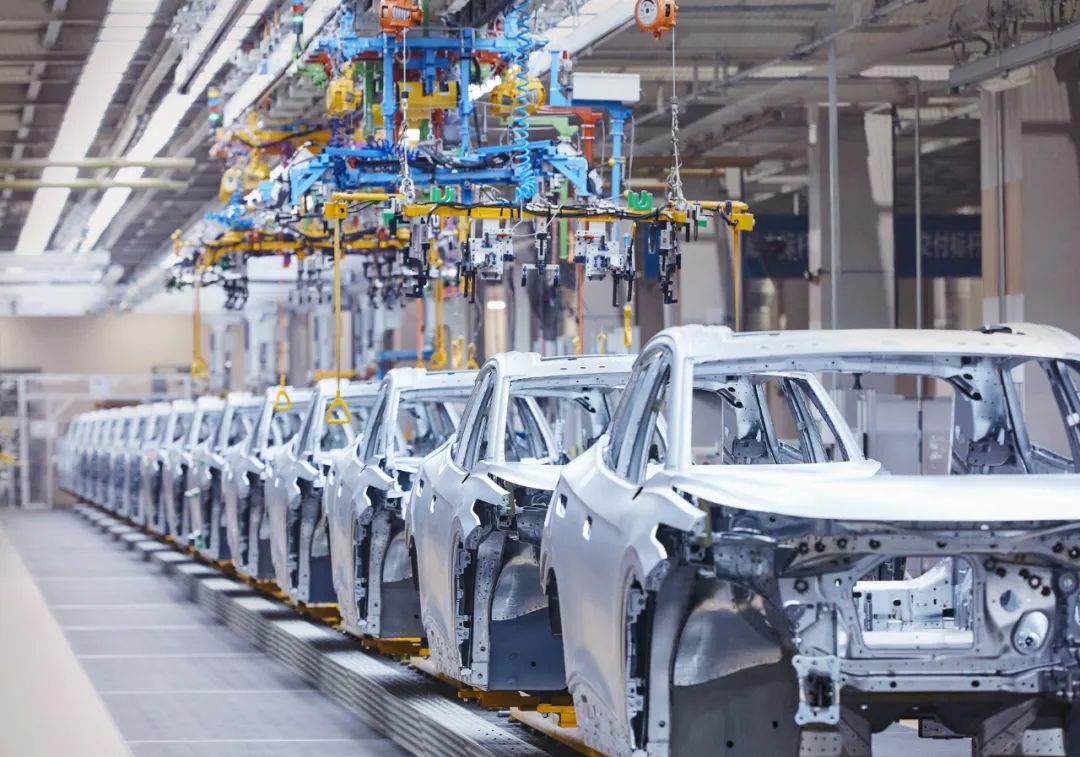From "Chip Shortage" to "Price War": Navigating China's Automotive Chip Industry Under Sanctions
![]() 02/21 2025
02/21 2025
![]() 442
442
Amidst the smoldering embers of the Sino-US trade war in 2018, a tiny chip, scarcely larger than a fingernail, emerged as the focal point of a global power struggle. From Huawei's supply chain disruptions to TSMC's chip shortages, from the "process race" of digital chips to the "hidden war" of analog chips, this technological battle for the future transcended mere commercial interests, evolving into a high-stakes game of national strategy. At the heart of this turmoil stood automotive chips, particularly analog chips, silently bearing the brunt of the conflict. Each smart electric vehicle requires 400-700 analog chips, serving as the "translators" between the digital and physical worlds, sensing currents, temperatures, and pressures. However, as China's new energy vehicles surge ahead with unprecedented momentum, this seemingly "mature" industry harbors significant threats. In May 2023, Texas Instruments, the global analog chip juggernaut, unexpectedly ignited a price war in China, slashing power management chip prices by half and steeply reducing signal chain chip prices, even clearing the market at a "negative gross margin".

Concurrently, massive subsidies from the US "Chips and Science Act" poured into Texas Instruments' 12-inch wafer fabs, slashing costs by an additional 40%. A silent "killing war" against China's analog chip industry commenced. How can China's automotive chip industry pierce through the iron curtain erected by these giants under the shadow of sanctions?
Giants' "Cost Scythe" and Market "Roller Coaster"
Texas Instruments' ascent is a textbook example of "countercyclical operations." During industry downturns, it continuously reduces costs through its IDM model (integration of design, manufacturing, and testing) and process iteration (like LBC10 technology). When competitors falter, it wields the "price scythe" to harvest market share. In 2023, Texas Instruments' price cuts in China reached 50%, embodying a stark and brutal logic: "Utilize US government subsidies and profits from the Chinese market to crush the cash flow of Chinese enterprises." More devastatingly, Texas Instruments' "cost computing power" far surpasses that of its Chinese counterparts. A domestic chip salesperson revealed, "Texas Instruments can accurately calculate our cost line and leverage economies of scale to price close to that line, forcing us to either compete at a loss or exit the market." Behind this "cost hegemony" lies decades of IDM model accumulation, a 40% cost advantage in 12-inch wafer fabs, and nearly US$10 billion in tax credits and subsidies from the US government annually.
The turning point arrived in 2020 when the "chip shortage" erupted, presenting a golden opportunity for China's analog chips. At that time, the price of a voltage regulator soared from RMB 2 to RMB 70, with automotive executives stationed in Shanghai to "snatch chips," and domestic chips transitioned from being "shut out" to being "guests of honor." However, in the second half of 2022, the market took a sharp downturn, with weakening end demand and an influx of thousands of companies, leading to a reversal of supply and demand. The price of the same voltage regulator plummeted to RMB 0.5, a drop of 99%. This "roller coaster" ride exposed a critical weakness in China's chip industry: excessive reliance on market fluctuations and a lack of technological moats. When the price war erupted, among the 1,700 analog chip enterprises, those with annual revenue of less than RMB 300 million were destined for elimination. An executive of a listed company bluntly stated, "This is not competition, but clearance." At present, the focus is on the 7nm and 5nm processes of digital chips, while the US government is brewing sanctions on "mature processes" (90nm and above) chips, directly targeting China's automotive analog chips. If implemented, Chinese automakers may face the risk of "chain disruption," while giants like TI can seize the opportunity to further monopolize the market. Ultimately, under the triple squeeze of technological gap, cost disadvantage, and policy blockade, China's automotive chip industry is enduring its "darkest hour".
The "Demand Volcano" of New Energy Vehicles and the "Time Window" for Domestic Substitution
Currently, all new energy automakers grapple with "chip hunger." Notably, the demand for chips in smart electric vehicles is eight times that of traditional fuel vehicles. The chip value per Tesla Model 3 reaches US$2,875, and China's new energy vehicle sales have surpassed 9 million units annually. This world's largest market is fostering a "chip demand volcano." Crucially, the iteration speed of China's new energy vehicles far outpaces that of international giants. Tesla's HW chips are replaced every three years, whereas Chinese automakers' intelligent driving systems are upgraded almost annually. This "agile demand" is precisely where Texas Instruments falls short—its standardized "global chessboard" model struggles to swiftly respond to customized demands.

The chip shortage from 2020 to 2022 created a breach for China's chip enterprises. Automakers were compelled to extend verification cycles, enabling domestic chips to undergo "on-board" trials. Companies like Naxi Microelectronics and Silicon Power Integrations seized this opportunity to break through automotive certification, and their market share surged from "crumbs" to 10%. Despite the impending price war, this window period allowed China to amass valuable automotive-grade experience. Currently, the Central Economic Work Conference has prioritized "rectifying convoluted competition," and local governments support chip enterprises through funds and industrial parks. More importantly, the "vertical collaboration" between automakers and chip enterprises is deepening. BYD independently develops IGBT, NIO develops the "Yang Jian" LiDAR chip, and Geely jointly ventures with Cenxin Technology to tackle intelligent driving SoC. This "demand-side driving supply-side" model is fostering a local ecosystem. In summary, market demand, policy dividends, and industrial chain collaboration are the three forces propelling the "breakthrough door" for China's chip industry.
From "Price Killing" to "Ecological Revolution"
Based on various phenomena, we can delineate three strategies for China's automotive chips to break the deadlock: First, differentiated competition. Texas Instruments' dominance lies in "general-purpose chips," but its Achilles' heel is "customization ability." The breakthrough for Chinese enterprises hinges on deeply cultivating niche scenarios. For instance, NIO's "Yang Jian" chip specializes in LiDAR control, reducing the cost per vehicle by hundreds of dollars after replacing the FPGA solution; RoboSense's M-Core chip halves the LiDAR circuit board area. "Define chips by scenarios, not vice versa"—this is the differentiation philosophy of Chinese enterprises. Second, technological breakthrough. Analog chip performance relies 70% on technology. Texas Instruments' LBC10 technology is nearing physical limits, and the opportunity for Chinese enterprises resides in "collaborative technological innovation." Companies like SG Micro and AWinic are jointly establishing laboratories with SMIC and Hua Hong Semiconductor to co-develop automotive-grade BCD processes. A chip engineer stated, "We and the wafer fabs jointly invest in research and development, share risks, and iterate 30% faster than TI." Finally, ecological revolution. Numerous harsh lessons underscore that going it alone is challenging against international giants. China needs to forge an ecological closed loop of "chips-algorithms-vehicles." For example, Horizon Robotics' "Journey" chip is deeply integrated with BYD and Great Wall, ensuring shipment volume while feeding back to algorithm optimization. A grander vision is the "open-source ecosystem"—the Zijing M100 chip based on the RISC-V architecture has been ignited, potentially breaking ARM's ecological monopoly in the future. In essence, differentiation, technological collaboration, and ecological closed loop—only the trinity can counter the giants' "price killing".
Epilogue: The "Final Conjecture" of the Automotive Chip War
The irony of history lies in the fact that crises often breed the greatest opportunities. Nineteenth-century Britain decimated handicrafts with steam engines, and twentieth-century America overturned European craftsmanship with assembly lines. In the twenty-first-century chip war, the winning move may not lie in technology itself, but in "ecological reconstruction." The future of China's automotive chip industry does not hinge on replicating TI's IDM model but on transforming the market advantage of new energy vehicles into technological standards and ecological discourse power. When NIO's "Shen Ji" chip, Huawei's "Ascend" computing power, and RoboSense's "M-Core" LiDAR synergize, a "new chip continent" belonging to China may emerge. However, the premise of all this is: refuse to engage in convoluted competition and adhere to long-termism. Chips are a business that takes "a decade to hone a sword," and only patience that spans cycles can usher in a brighter dawn.







